Equipment & Maintenance
To get started with beekeeping, it is important to acquire protective clothing and appropriate equipment to protect yourself and the bees. Many beekeeper suppliers offer beginners kits with the necessary basic supplies. Below is a list to get started. To maintain optimum safety, it is important to regularly check your hives and beekeeping equipment. Repair or replace equipment as needed to keep them in good working condition.
Bee Hives
Beehives are structures in which bees live. They can be made by bees or by humans. In nature, honey bees use different kinds of cavities to build their hives, such as hollow trees or crevices in rocks. Domesticated bees live in man-made hives. The internal structure of the hive consists of hexagonal cells made of beeswax called the honeycomb. The bees use these cells to store honey and pollen and to house the brood (eggs, larvae and pupae).
There are two basic types of modern hives, the movable-frame “Langstroth hive” and the movable-comb “top bar hive”. Hives with movable frames and combs allow the beekeeper to inspect for diseases and parasites and to more easily split the hive to make new colonies.
|
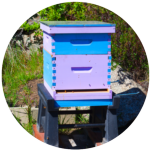
|
The Langstroth Hive is made of stacked boxes of different depths, a floor, inner cover and a roof. Within each box there are movable wooden frames in which the bees build their honeycomb. |
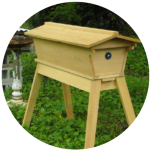
|
The Top-bar Hive is basically a cavity with top bars. Top bar hives with sloping sides are called Keyna, while those with straight sides are called Tanzania top bar hives. |
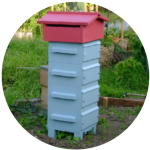
|
The Warre Hive is a vertical top bar hive. Some advantages and disadvantages of each type of hive are reported on the websites of many online beekeeping suppliers. |
Photo Credits: Image 1: Ben DiAnna Image 2: "top bar bee hives in Middle Tennessee" by kt.ries Licensed under a Creative Commons Attribution 2.0 Generic (CC-BY2.0). Accessed 30 June 2016. https://www.flickr.com/photos/kt_ries/5651585843. Image 3: "Warre Hive" by London Permaculture. Licensed under a Creative Commons Attribution 2.0 Generic (CC-BY2.0). https://www.flickr.com/photos/naturewise/4727260730.
Bee Suit
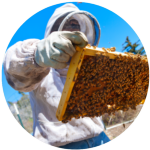
|
One-piece bee suits can be full length or jacket length, and include a zip-on veil. They are usually made of white cotton or a blend of white polyester and cotton and have pockets to carry tools. Their wrists and ankle cuffs should fit tight and have no gaps. The protective veil should cover face and head but allow clear visibility. |
Photo Credit: Ben DiAnna
Gloves
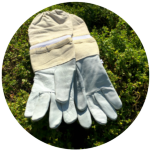
|
Gloves can be made from cloth or canvas, plastic coated canvas, leather, or some kind of plastic. They must fit well. Some long sleeves gloves have a ventilation area. In some cases, gloves are not appropriate due to potential contamination. Disposable Latex or plastic could be an alternative. |
Photo Credit: Ben DiAnna
Boots
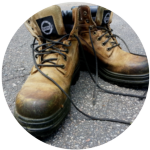
|
Strong working boots or boots with protective toe caps to protect from bee stings or from heavy equipment. Boots should cover the ankles-and prevent bees from crawling up inside your pants. Long leg pants can be tucked into the boots. |
Cleaning Equipment
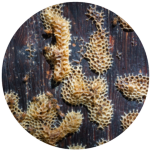
|
Clean and disinfect your beekeeping clothing and equipment regularly. There are beekeeping cleaning supplies available at gardening, local beekeeping stores or online. |
Photo Credit: Ben DiAnna
Bee Smoker
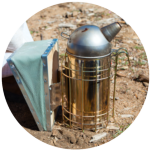
|
Bee smokers are devises used to calm bees. They are metal cylinders designed to generate thick cool smoke using different types of materials. Beekeepers puff smoke into the hive, creating opportunities to inspect and work with their colony. |
Photo Credit: Ben DiAnna
Fire Safety and Suppression Equipment

|
With the use of bee smokers and the risks of a fire event occurring in San Diego County region, it is critical to have fire safety and suppression equipment easily accessible near apiaries. Firefighting supplies include a shovel and a fire extinguisher, backpack type firefighting pump or an operable water supply such as a charged garden hose with a nozzle that is extended to the apiary site. |
Photo Credit: Ben DiAnna
Beekeeping Hive Tool
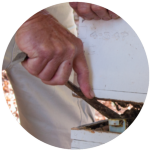
|
The hive tool is considered a “must-have” for the beekeeper. The standard beehive tool is made of steel and has a flat sharp blade on one side and a blade-like end with a bend on the other one. It is essential for prying apart hive bodies, loosening covers, hooking the head of nails, and scrapping propolis or wax off hive parts. |
Photo Credit: Ben DiAnna
